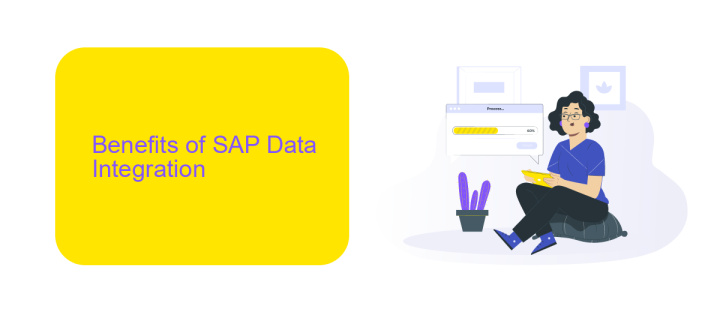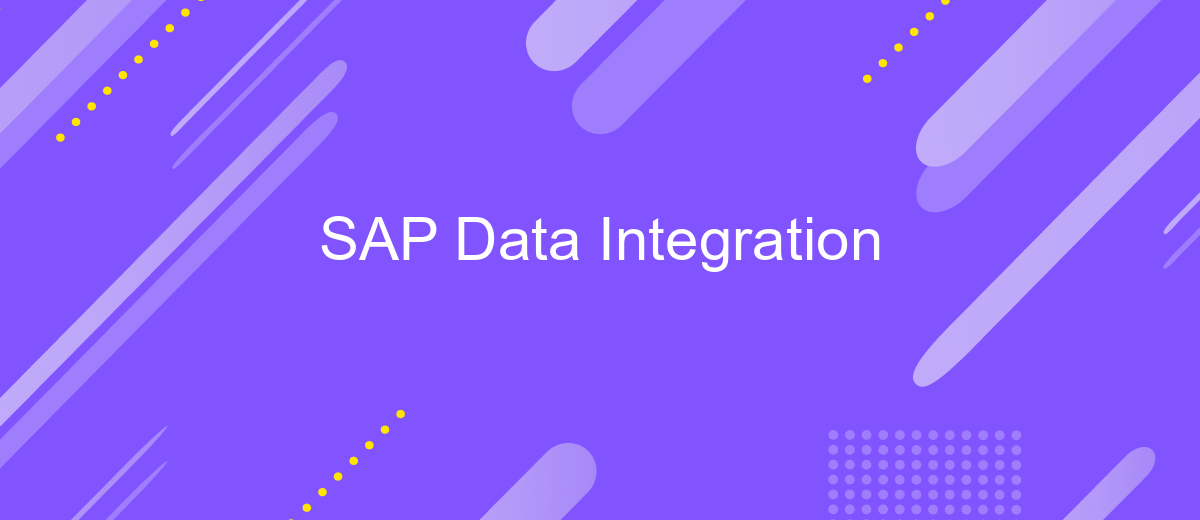SAP Data Integration
SAP Data Integration is a critical component for businesses looking to streamline their data management processes. By seamlessly connecting disparate data sources, SAP enables organizations to achieve real-time insights, improve decision-making, and enhance operational efficiency. This article explores the key features, benefits, and best practices of SAP Data Integration, guiding you through its implementation and optimization.
Introduction
SAP Data Integration is a critical aspect of modern business operations, enabling seamless data flow between various systems and applications. Efficient data integration ensures that data is consistent, accurate, and accessible across the organization, leading to better decision-making and operational efficiency.
- Real-time data synchronization
- Centralized data management
- Enhanced data accuracy and consistency
- Improved business intelligence and analytics
To achieve effective SAP Data Integration, leveraging powerful integration tools like ApiX-Drive can be highly beneficial. ApiX-Drive offers a user-friendly platform that simplifies the setup of data integrations, allowing businesses to connect SAP with other applications seamlessly. This ensures that data is always up-to-date and readily available, empowering organizations to maintain a competitive edge in today's fast-paced digital landscape.
Benefits of SAP Data Integration

SAP Data Integration offers a multitude of benefits, including enhanced data accuracy and consistency across various business applications. By integrating data from disparate sources, organizations can achieve a unified view of their operations, leading to more informed decision-making and improved operational efficiency. Furthermore, SAP Data Integration ensures real-time data availability, which is crucial for timely reporting and analytics.
Another significant advantage is the automation of data workflows, reducing manual intervention and the risk of human error. Tools like ApiX-Drive can further simplify the integration process by providing user-friendly interfaces and pre-built connectors to various applications. This not only accelerates the setup of data pipelines but also ensures seamless data flow between systems. As a result, businesses can focus more on strategic initiatives rather than spending time on complex data management tasks.
Use Cases

SAP Data Integration is essential for businesses aiming to streamline their data processes and ensure seamless connectivity between various systems. By integrating data from different sources, companies can achieve better data consistency, improve decision-making, and enhance overall operational efficiency.
- Real-Time Data Synchronization: SAP Data Integration allows for real-time data updates between ERP systems and other business applications, ensuring that all departments have access to the most current information.
- Enhanced Data Quality: By consolidating data from multiple sources, businesses can eliminate data redundancy and inconsistencies, leading to more accurate reporting and analytics.
- Automated Workflows: Tools like ApiX-Drive facilitate the automation of data transfer processes, reducing manual intervention and minimizing the risk of human error.
- Scalability: With SAP Data Integration, organizations can easily scale their data management solutions as they grow, adapting to increasing data volumes and complexity.
By leveraging SAP Data Integration, businesses can optimize their data management strategies, resulting in improved efficiency and productivity. Utilizing services like ApiX-Drive further enhances these capabilities by offering seamless and automated data integration solutions tailored to specific business needs.
Key Features

SAP Data Integration offers a comprehensive solution for seamless data management and integration across various platforms. It ensures that data flows smoothly between different systems, enhancing operational efficiency and decision-making processes.
One of the standout features of SAP Data Integration is its ability to handle large volumes of data with high reliability and speed. This capability is crucial for businesses that rely on real-time data analytics and reporting.
- Robust data transformation and mapping tools
- Support for a wide range of data sources and destinations
- Real-time data synchronization
- Scalable architecture to handle growing data needs
- Advanced security and compliance features
Additionally, services like ApiX-Drive can be integrated with SAP Data Integration to further streamline data workflows. ApiX-Drive provides a user-friendly interface for setting up and managing integrations without the need for extensive coding knowledge, making it an ideal complement to SAP's robust data management capabilities.
Implementation and Support
Implementing SAP Data Integration requires a comprehensive approach to ensure seamless connectivity between various data sources and the SAP environment. The process begins with a thorough assessment of the existing infrastructure and data landscape. This helps identify the necessary data connectors and integration points. Tools like ApiX-Drive can significantly streamline this phase by offering pre-built connectors and automated workflows, thereby reducing the complexity and time required for setup. Proper configuration and testing are crucial to ensure data accuracy and reliability across integrated systems.
Once the integration is live, continuous support and monitoring are essential to maintain optimal performance. Regular audits and performance checks help identify and resolve potential issues before they impact business operations. Leveraging support services from platforms like ApiX-Drive can provide automated alerts and real-time monitoring, ensuring that any disruptions are promptly addressed. Additionally, ongoing training and documentation updates for the team are vital to keeping everyone informed about new features and best practices, thereby ensuring the long-term success of the SAP Data Integration.
FAQ
What is SAP Data Integration?
How can I automate data integration tasks in SAP?
What are the benefits of integrating external data sources with SAP?
How do I ensure data security during the integration process?
What challenges might I face during SAP Data Integration and how can I overcome them?
Time is the most valuable resource for business today. Almost half of it is wasted on routine tasks. Your employees are constantly forced to perform monotonous tasks that are difficult to classify as important and specialized. You can leave everything as it is by hiring additional employees, or you can automate most of the business processes using the ApiX-Drive online connector to get rid of unnecessary time and money expenses once and for all. The choice is yours!

